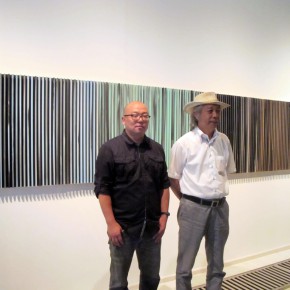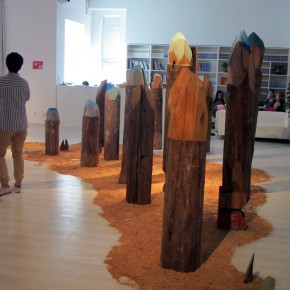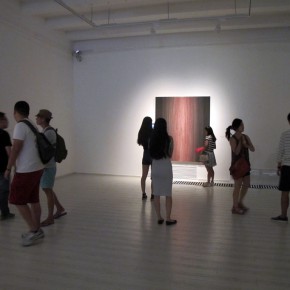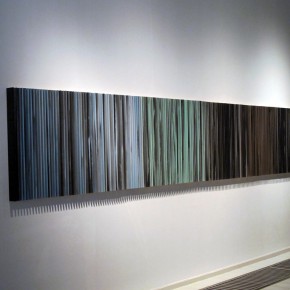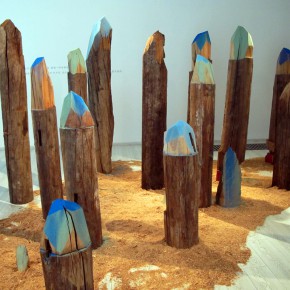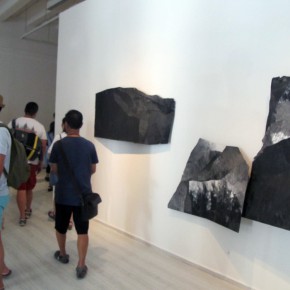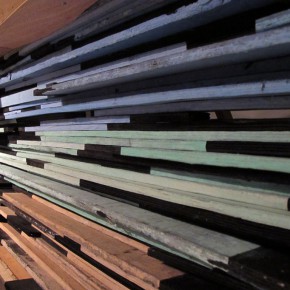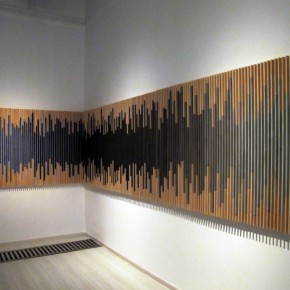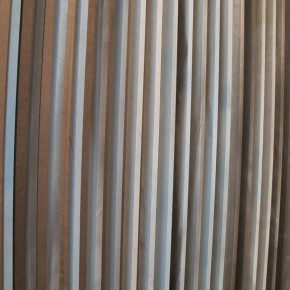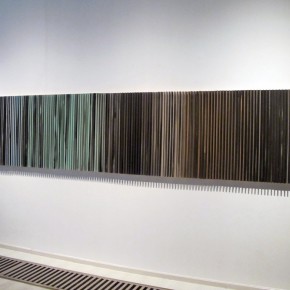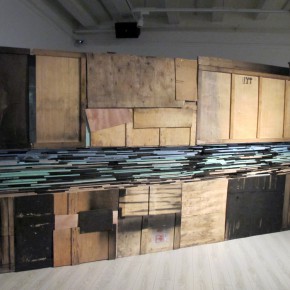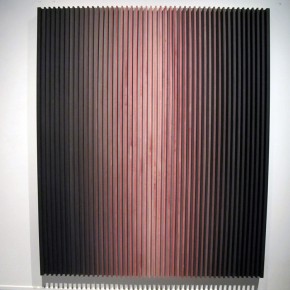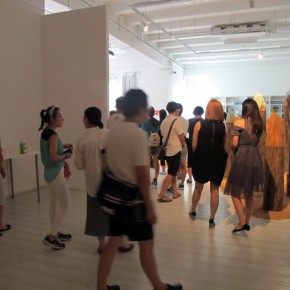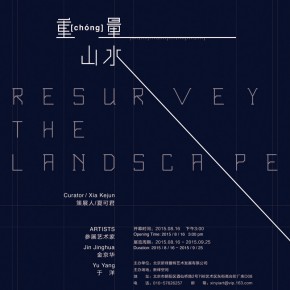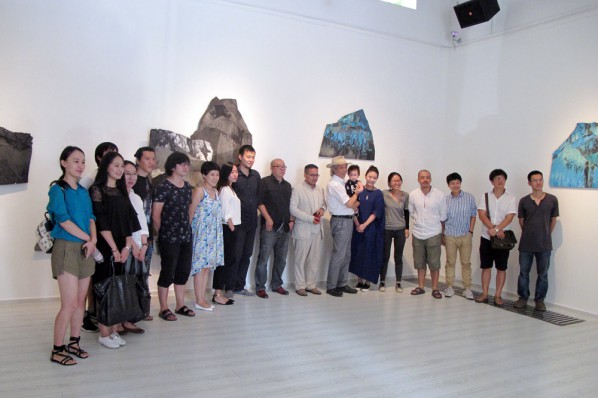
On the afternoon of August 16, 2015, “Resurvey the Landscape” Group Exhibition of Jin Jinghua and Yu Yang was unveiled at Ovation Art Space. The exhibition is sponsored by Ovation Art Development Co., Ltd., and Xia Kejun serves as the curator, to present more than 10 sets of works by Jin Jinghua and Yu Yang. The two artists both graduated from the Materials and Expression Studio at the School of Chinese Painting, CAFA, the exhibited works take “l(fā)andscape” as the main clue, combining its own thinking and feelings toward traditional and contemporary art, using different materials for the creation, to reset and interpret the traditional landscape again.
Landscape is the mainstream of traditional Chinese painting, containing the Chinese literati’s philosophical speculations about the relation between man and nature, this had become the peak for the performance of painting in the Tang and Song Dynasties, and then it was integrated into the expression of the state of mind of the creator, and became the main carrier of literati paintings. Along with the introduction of Western learning and the progress of cultural modernization, the expressive form, material technology, creative ideas in the ink painting of landscape made all sorts of new breakthroughs and appearances, which was inevitable thinking on the relationship between the traditional and innovation relationship for the artists, under a culturally diversified developing environment. As the curator Xia Kejun wrote in the preface that, it is necessary for the three factors of traditional Chinese painting of landscape, including the ink and brush of the texture of mountains, rocks, grass and trees, the method of three-far composition works and the empty, cold, insipid artistic conception offers a transformation when they enter modernity: ink and brush is reduced to the texture of the materials, three-far composition demands an abstract transformation, the empty and cold natural artistic conception demands a transformation in a modern public space: the traditional shocking vigor and the vision of distant mountains is subject to the emergence of a new way.
Guided by the tutor Hu Wei, the Materials and Expression Studio at the School of Chinese Painting, CAFA, pays more attention to the materials and techniques in the creation, the active and diverse teaching thought greatly expands the students’ language dimension. Jin Jinghua and Yu Yang, graduated from the Materials and Expression Studio at the School of Chinese Painting, CAFA, both use a new way that is different from the traditional landscape, to help people face the natural landscape once again, not only resurveying or reproducing the mental energy of landscape, and also stimulating the weight of the natural inner depth, if it gives up on the performance of noble natural weight, it will be reduced to a photographic landscape.
Jin Jinghua’s “The Demolished Green Landscape” is themed on the beams of the demolished houses, through dyeing the tops green, an arrangement of various heights, casually covered by wood chips, to reconstruct the performance of an artistic conception of a green landscape painting, meanwhile people can see the reflection of the current survival situation, home and nature are in a residual state, using the leftover wood to reconstruct the contemporary situation of nature, touching the pain. “A Set of Rocks Composition” reflects that the artist tries to ponder on the predecessors’ conception, taking the artistic classics as the source, to draw the conceptual shape of a mountain from the original piece, trying to simplify the shape of the mountain as much as possible, transforming it to a visual feeling that is more acceptable by the public, in the process it also finishes her deconstruction of the concept of “three far”.
Yu Yang is not satisfied with the thousand-year aesthetic developing logic of traditional landscape painting in the creation, and he is rarely calm when “reflecting on the possible effects after the ink order is broken”, in the exhibition several groups of work, he uses the juxtaposition of battens to create the same clearance, using black rice paper or ochre pigments to package and daub, creating a fence, to form a visual minimalist abstract effect in the vision. Actually these inerratic battens can be rearranged in different exhibitions, and it is the artist’s thinking of rules and the accidental, rational and accidental relationship. Using recycled materials such as packing cases for art, the artist created the “Newly Emerging Zone”, which reflects the artist’s thinking of the present status quo of art, it is a pity to abandon it as it is tasteless, just as the current chaos of “Chinese ink painting” is not able to stand for this age, but it is located in the cultural collision and is a part of the present art ecology.
The exhibition will continue to September 25.
Text and photo by Zhang Wenzhi/CAFA ART INFO
Translated by Chen Peihua and edited by Sue/CAFA ART INFO



